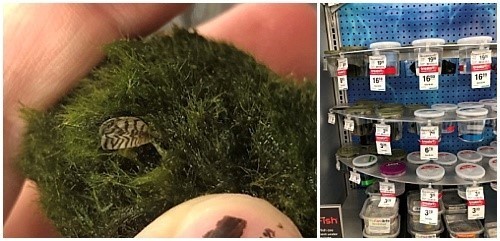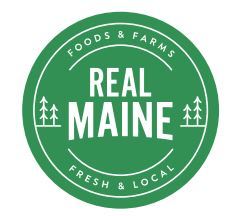|
In this issue:
In January 2017 when Chapter 273, Criteria for Listing Invasive Terrestrial Plants was adopted, the final section of the rule prescribed a five-year review of the listed species. The Horticulture Program has begun the review process by assembling a stakeholder committee that is assisting in reviewing the rule and any proposed species to add or remove from the list. Ryan Russell of Land Plans Inc, Jake Pierson of Pierson Nurseries and Randy Martin of the King's Gardener are the nursery representatives on the stakeholder committee.
The stakeholder committee held its first meeting at the beginning of March and is meeting regularly throughout the year to accomplish various tasks.
List of Stakeholder Committee Members, Tasks and Estimated Timeline of Rule Review
Opportunities for Participation
The stakeholder committee will do the bulk of the work to assemble, review and prepare a proposed list of species for inclusion on the prohibited plant list, but there are still ways for you to make sure that your voice is heard. Here are four ways you can participate in the process:
-
Have a species in mind that you think should be evaluated for inclusion on the prohibited plant list? Submit the species using the Maine Invasive Species Nomination Form.
-
Is there a new or existing cultivar of a species on the current prohibited list that research shows is not invasive? Submit the Request to Exempt a Specific Cultivar paperwork.
-
Contact a committee member to discuss a particular species and how its inclusion (or exclusion) on the prohibited plant list might affect you.
-
When the proposed rule goes out to public comment be sure to review the proposed rule and submit your comments. We want to hear from you whether you are in support, against or neither for nor against the proposed rule changes. The Department will respond to every comment before the rule is finalized. In some cases, if enough comments are submitted suggesting changes the proposed rule may be revised and re-submitted for public comment. The only way for us to know how the proposed rule affects you, is if you tell us!
 Left: Marimo moss ball contaminated with zebra mussels, Right: a display of Marimo moss balls for sale at a pet store
In March we forwarded a message from the Maine Department of Inland Fisheries and Wildlife about marimo moss balls that were sold in the aquarium trade and potentially infested with invasive zebra mussels. At the time we believed that the moss balls were mainly sold by pet stores or other businesses selling aquarium materials, since then we have learned that marimo moss balls are also sometimes sold as terrarium or houseplants. With this in mind, we wanted to provide more information about zebra mussels and the proper disposal of contaminated materials including exposed marimo moss balls, other plants and water.
What are marimo moss balls?
Marimo moss balls (Aegagropila linnaei) are not plants, but a form of filamentous green algae. Although not common in nature, they are found in lakes in Japan and northern Europe, where gentle wave action forms the algae into its characteristic round shape. Marimo moss balls are sold for decorative use in aquariums (sometimes under the trade name “Betta Buddy”) and are also occasionally sold as terrarium or house plants. Marimo moss balls are not considered invasive.
Zebra mussels (Dreissena polymorpha) are a small freshwater shellfish that is native to Europe. The zebra mussel is considered one of the most destructive invasive species in North America. In the US they are found infesting the Great Lakes and many other rivers and lakes. There are not currently any known established populations in Maine.
When introduced to new waterways zebra mussels quickly establish and cause significant damage by disrupting the food web, altering the chemistry of the water and clogging pipes thereby damaging water intake and drainage systems.
Immature zebra mussels are microscopic and easily moved to new waterways on boats and other recreational water equipment. Zebra mussels can also be moved by the improper disposal of contaminated aquarium contents including water, plants and decorations.
In early March regulators became aware that marimo moss balls were sold nationwide that were contaminated with invasive zebra mussels. At this time, it is unclear where the infested moss balls originated, when the contamination may have occurred and which suppliers may have sold infested material. Any moss ball purchased in the last year should be treated as contaminated.
Potentially contaminated moss balls, the water they are in and any plants or other contents of the container holding the moss balls should be treated and disposed of to prevent the spread of zebra mussels.
Destroy moss balls and other potentially contaminated plants by:
-
Freeze - Place the material into a sealable plastic bag and freeze for at least 24 hours or
-
Boil - Place the material in boiling water for at least 1 full minute.
After destruction, DISPOSE of the moss ball, other contaminated plants and any packaging in a sealed plastic bag in the trash. Do not dump moss balls down drains, in waterways, gardens or compost piles.
After removing any fish or other living organisms, sterilize the water, container and non-living items in the container by:
- Sterilize the water by adding 1 cup of household bleach for each gallon of water.
-
Sterilize filter, rocks, décor, and any other items in contact with the water.
-
Let the water sit for 10 minutes and then dispose of the treated water down a household drain.
Thank you for doing your part to keep this invasive species out of Maine's waterways.

The Real Maine brand was created by the Maine Department of Agriculture, Conservation, and Forestry to market Maine agricultural products. If your farm or business creates Maine agricultural products (grown or produced in the state) or agricultural experiences, sign up to become a member! Members may use the logo on their products, may purchase marketing materials (such as stickers, banners, and hang tags), and will be listed on the website. Watch for Real Maine advertising in digital, print, and on-air media.
|
|